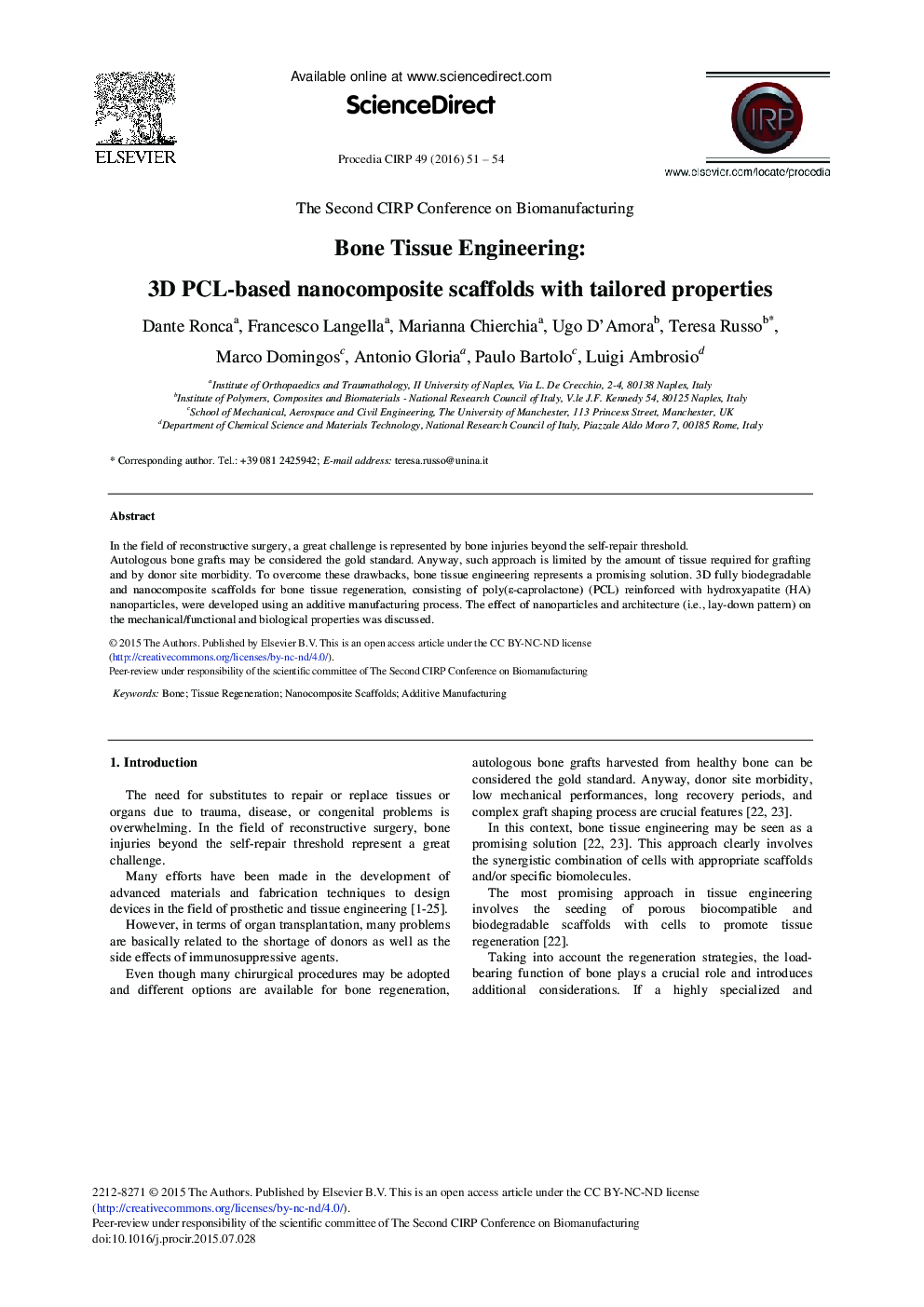| Article ID | Journal | Published Year | Pages | File Type |
|---|---|---|---|---|
| 1698227 | Procedia CIRP | 2016 | 4 Pages |
Abstract
In the field of reconstructive surgery, a great challenge is represented by bone injuries beyond the self-repair threshold.Autologous bone grafts may be considered the gold standard. Anyway, such approach is limited by the amount of tissue required for grafting and by donor site morbidity. To overcome these drawbacks, bone tissue engineering represents a promising solution. 3D fully biodegradable and nanocomposite scaffolds for bone tissue regeneration, consisting of poly(ɛ-caprolactone) (PCL) reinforced with hydroxyapatite (HA) nanoparticles, were developed using an additive manufacturing process. The effect of nanoparticles and architecture (i.e., lay-down pattern) on the mechanical/functional and biological properties was discussed.
Related Topics
Physical Sciences and Engineering
Engineering
Industrial and Manufacturing Engineering
Authors
Dante Ronca, Francesco Langella, Marianna Chierchia, Ugo D’Amora, Teresa Russo, Marco Domingos, Antonio Gloria, Paulo Bartolo, Luigi Ambrosio,
